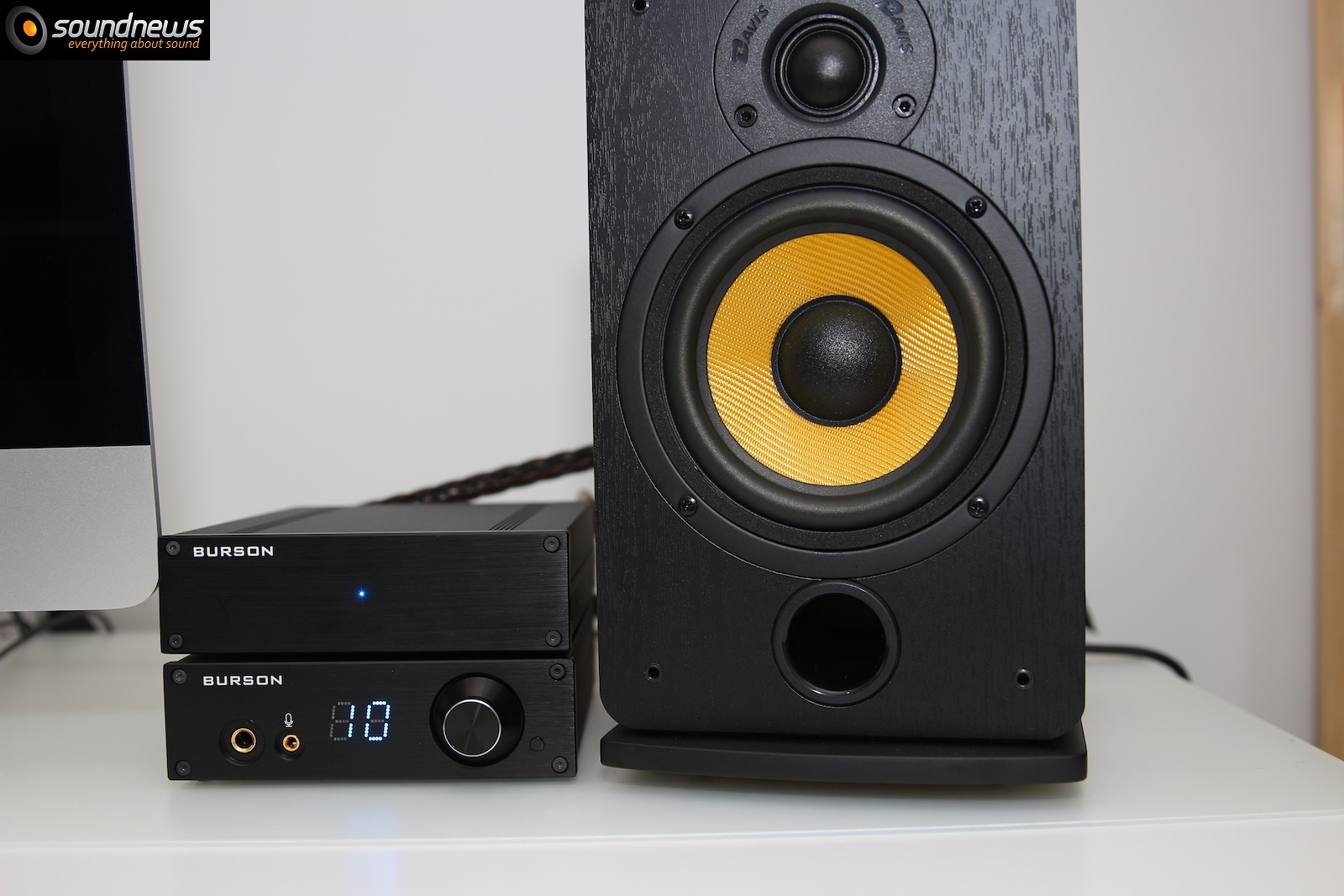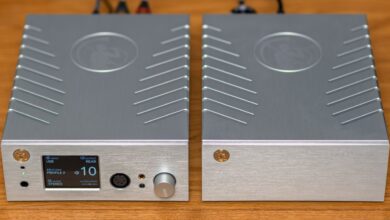Burson Audio goes with a Bang

Burson Audio goes with a Bang
When I’ve tested the Burson Play around one month ago I was kind of impressed by its small footprint yet with a really big and bold sound signature.
I’m really glad that Burson started thinking out of the box this last year and sincerely I dig every new product they released so far such as Play, Fun and Bang.
Small footprint and lower desk space don’t mean you’ll get a lower quality sound with boring dynamics.
When I heard the Play, it was everything you’d want but not boring at all and I do hope the same can be said about Bang and Fun.
Burson Audio was kind enough to send us the Bang and Fun to test the hell out of them and we did exactly that so at this time my review is concentrated around the Bang power amp that I am enjoying for a week or so.
Bang is quite small, it has the same size as the Play and Fun but when I connected it to my Davis Acoustics Eva speakers, I was a bit shocked by how much gain and power it has compared to my upper-class Cambridge Audio Azur 851A.
I will test the Bang connected directly to Play and to my digital pre-amp inside the Matrix Audio X-Sabre Pro and later I will compare it a bit with the Cambridge Audio Azur 851A

Under the hood
As the manufacturer suggests: “Bang is the smallest dual mono Class AB power amp in the world. Bang’s size is deceiving as Bang packs a jaw – dropping punch!”
I agree and I can attest that, using my Davis Acoustics Eva speakers together with Play and Bang I can’t go higher than 20 volume out of 99! Take into consideration that with my Cambridge Azur 851A I was using 50 out of 100 volume for the same SPL in the same room but with a difference source.
Using four sets of Max Current Power Supplies (MCPS) developed by Burson, Bang delivers overwhelming power, speed and details.
Taking into account its small size and weight you might think it uses a Class D amplifier stage, but you would be wrong. Bang is using a purist Class AB output stage for an organic, transparent and musical sound.
Bang is quite versatile as well because it has an internal gain buffer stage with selectable impedance levels.
It doesn’t matter if you are using a portable DAP, a desktop DAC or a high-performance pre-amp, Bang will work with any of them giving you’re the perfect performance and volume control every time.
Bang’s input buffer stage in basic form is controlled by a single NE5532 op-amp but you can change it to your liking with a better performing op-amp like Burson’s own V6 Vivid Dual or V6 Classic Dual op-amps to squeeze the best out of it.
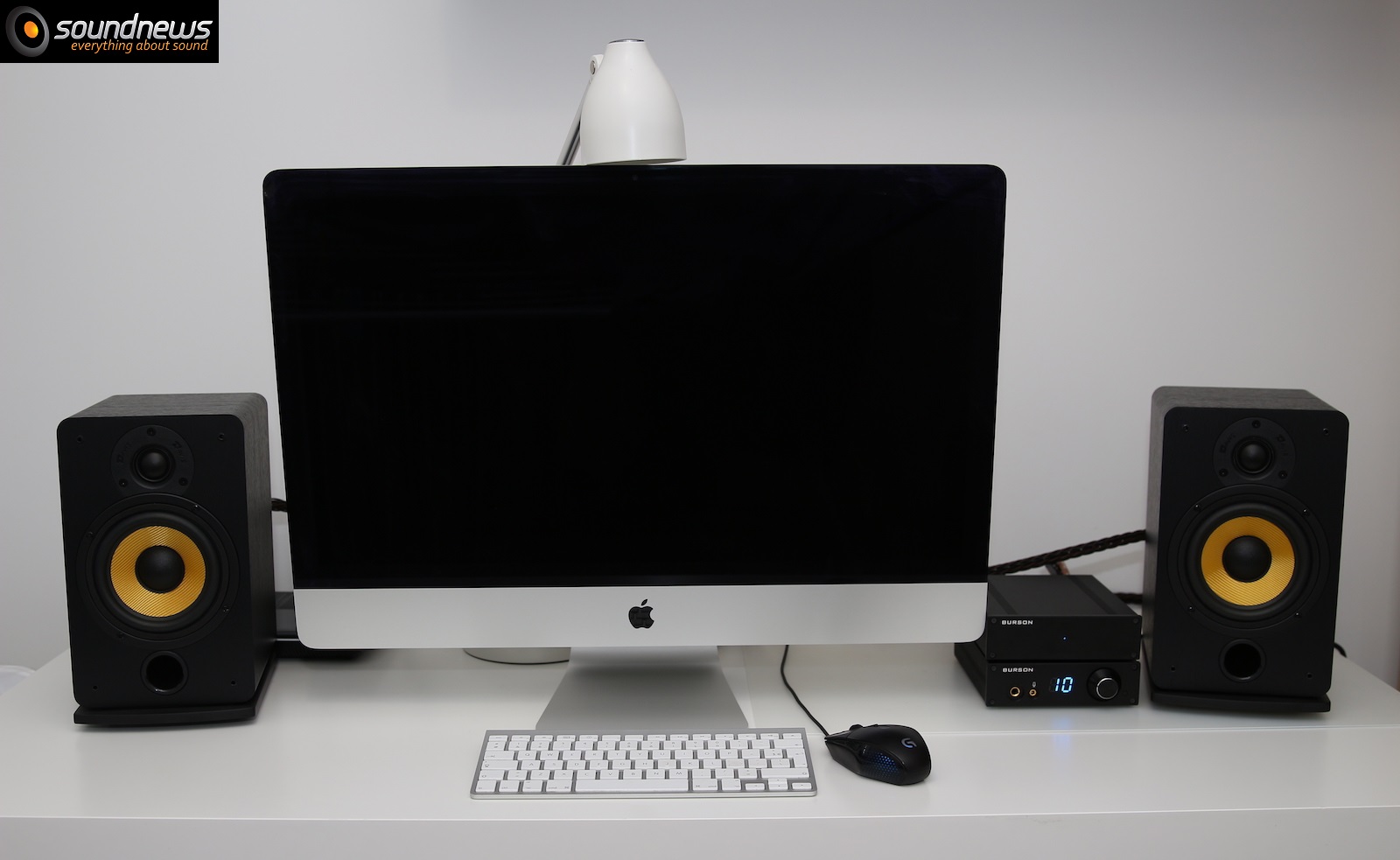
I am using the basic NE5532 version, but don’t worry as in its stock form Bang impressed me enough.
It wouldn’t be a Burson device if it would not use highest performance ELNA aluminum electrolytic capacitors and Vishay resistors; we literally see them in every Burson product.
Burson states that Bang has around 40W of power into 4 Ohm load and around 29 W into 8 Ohm loads but after hearing it with my speakers I am thinking they didn’t get the numbers right as it sounds much more powerful than that.
There are two possibilities: It has a higher power output and Burson somehow didn’t measure it right or the second one would be that Cambridge Audio inflated too much their power ratings to have a higher sales numbers on their hands. We will probably never know the truth but I am betting on the second possibility.
I am kicking myself in the nuts of not having at the time of writing a pair of stand-floor speakers as I anticipate Bang would drive those to ear bleeding levels and have some power reserve left.
For my Davis Acoustics Eva, Bang is too much, much more than enough, at 15% volume my desk trembles, at 20% volume my neighbors are knocking on the wall to lower my volume levels, it has gobs of power!
I want to add that for a better impedance matching I used the Burson Cable Pro+ between the Play and Bang to better evaluate its acoustic properties.
Let’s go with a Bang, shall we?
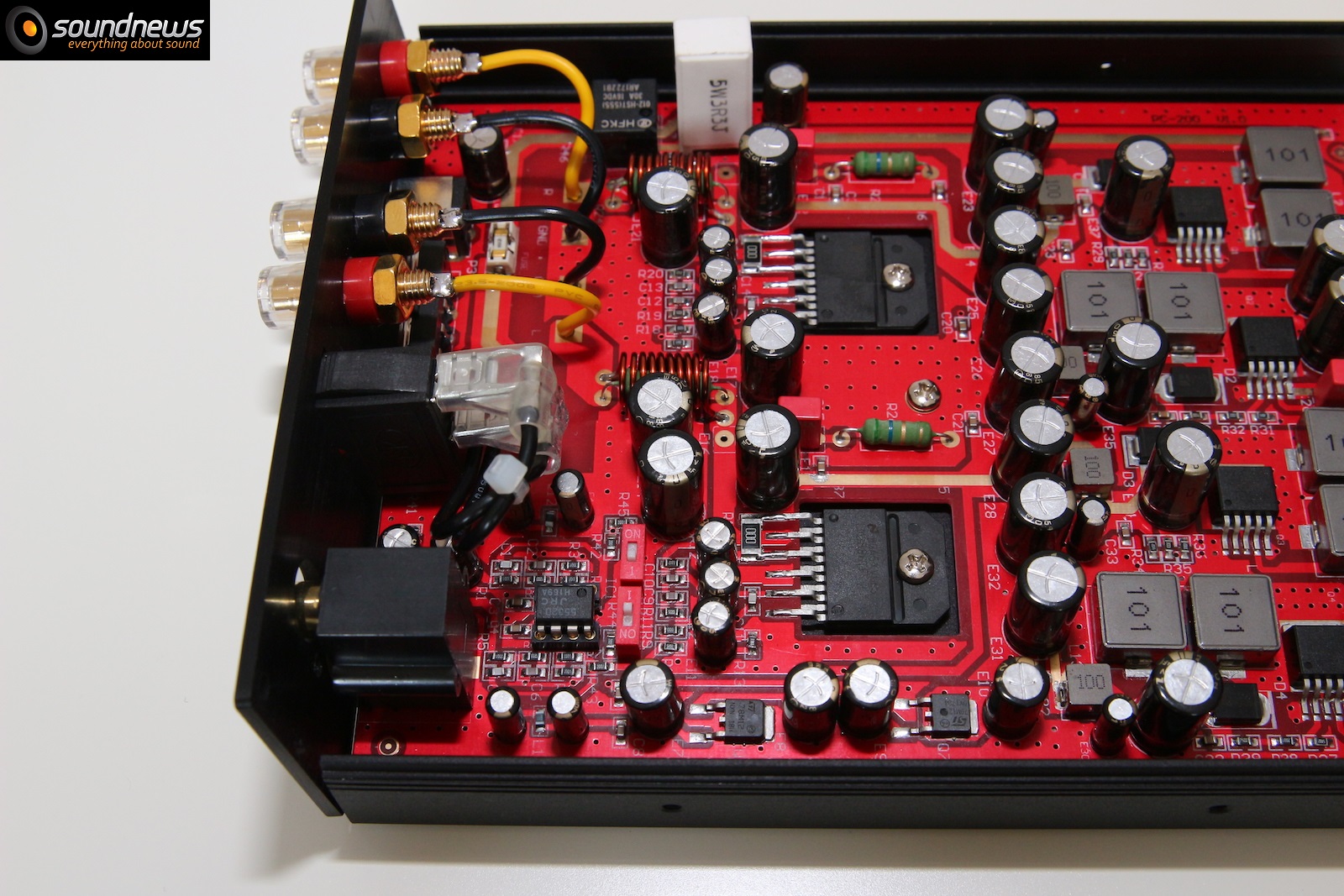
Audio Performance
As you probably guessed Bang drives my Davis Acoustics Eva with tons of headroom left on the volume dial.
I did test it with Play, Fun and with my digital preamp inside the X-Sabre Pro DAC.
Play + Bang was the easiest setup to play with as you have everything you need for a small yet powerful setup for all your headphones or speaker needs.
I think the Preamp section of Burson Play is too powerful, as I never got more than 20 on the volume dial.
First thing I noticed is that Bang is free of any noise; even at lowest volumes background is free of any noise or hum.
Secondly after pressing play I’ve heard an easiness of sound that often is heard only in Class A or Class AB amplifiers, but wait Bang is a Class AB design so this makes sense now.
Bang has a really good flow with any type of music, it’s like any music fast or slow, with longer or shorter decays will always sound natural and easy going. It is a type of sound that you don’t want to analyze but just relax and enjoy for a longer period of time.
Actually, this just happened to me, I sit down trying my best critically evaluating the Bang on all its sides, but after few tunes I brought a glass of wine, put my legs on the table, took the keyboard away and just enjoyed the music for the rest of the evening.
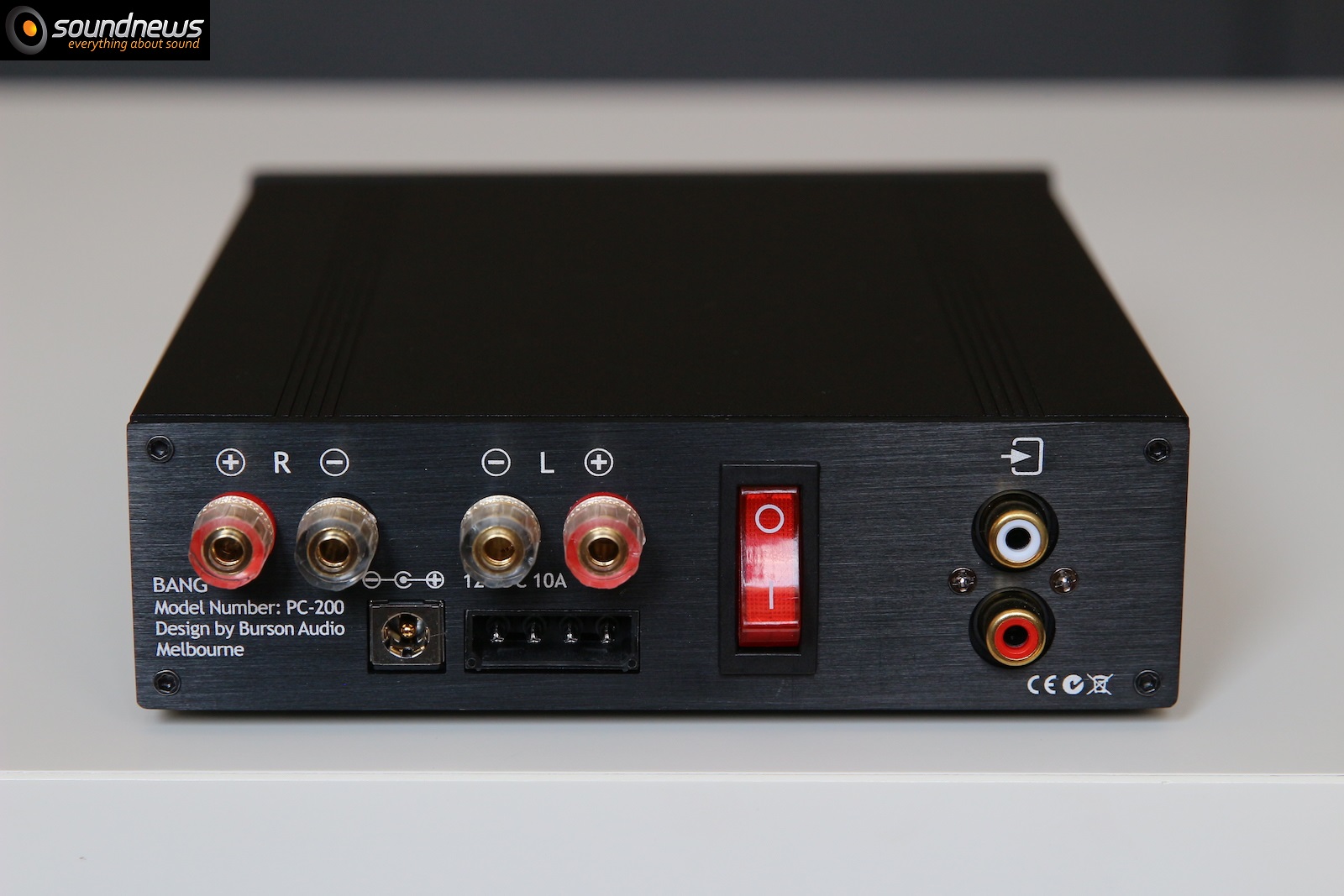
The next day I put some Subcarpați – De Dor Și De Bucurie and involuntarily started tapping my feet. This simple yet complex tune has everything from the frequency response point of view.
From lowest sub-bass to the upper treble I didn’t notice any dips or rises in the FR, so I can’t say it lacks or adds anything into the mix.
However, I felt a stronger bass response and a hint of naturalness on mid-range that again is heard mainly on high quality power amps.
There are few seconds at the start of the tune where sub-bass rumbles a bit longer than normal and I was curious if it will distort, it didn’t, way to go Burson.
Actually, sub-bass response is really good, in my opinion it has the right amount of decay and rumble.
The same can the said about the bass response.
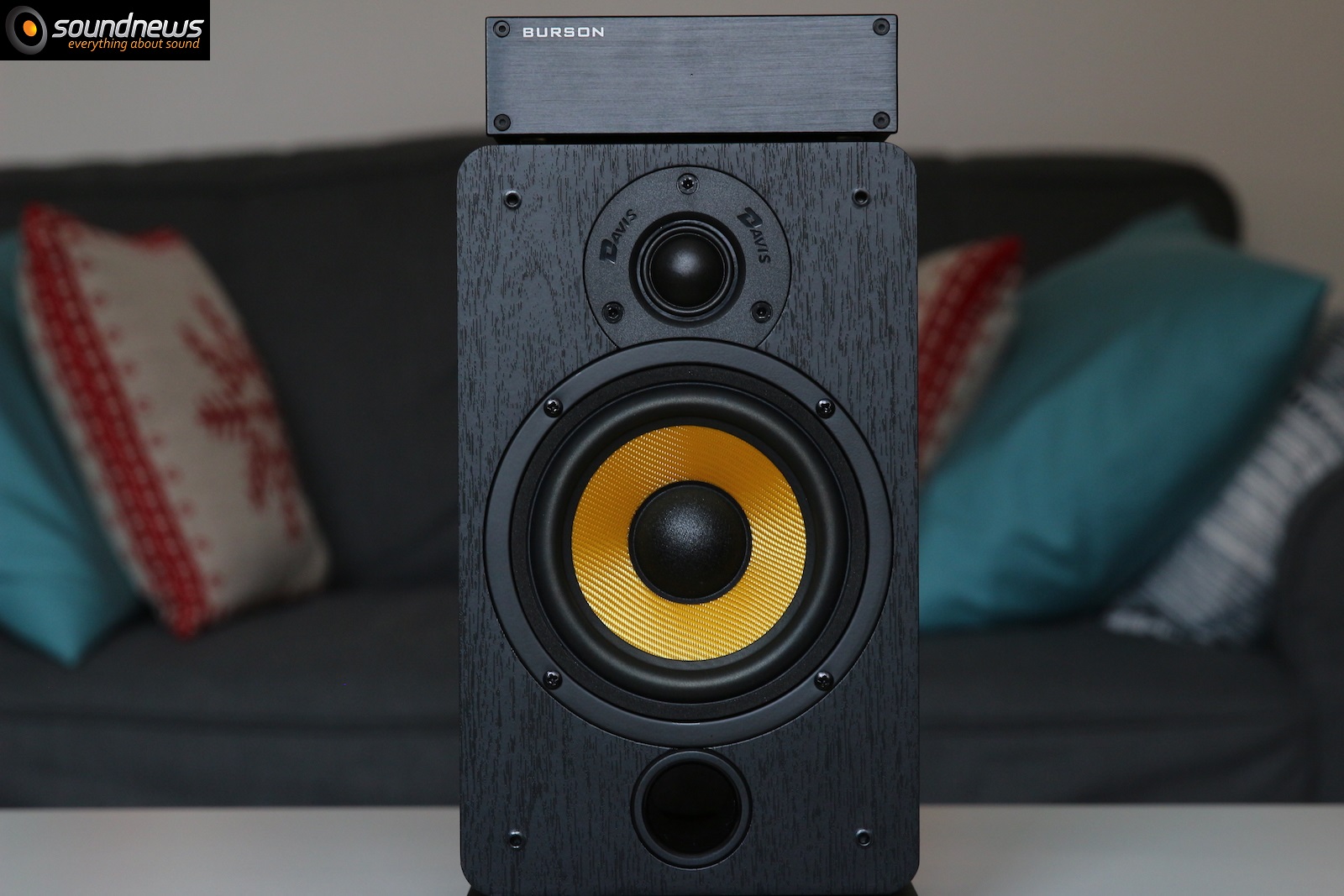
Trying the latest Infected Mushroom album, listening to Groove Attack track at the 01:00 minute mark a deep and clear bass response should be heard and with the right gear it really shakes you up. Bang passed the bass test with flying colors.
Mid-range performance is where I think Bang shines the most as it adds just a little character of its own to make it unique sounding.
Yes, that is right; mid-range goes a bit upfront compared to the rest of the spectrum. Most of the time the attention will be caught by the musical mid-range performance, can’t say I dislike that, but can’t say it’s a linear performance too.
Depending on the taste, if you prefer a slightly musical performance Bang will be to your liking. My speakers do not have a lot of mid-range presence so the Bang actually helped a bit.
Voices and string instruments have just a tiny longer decay than how I would call natural decays, the notes are lingering just a little bit longer than how for example I’ve heard on Play but that is all right.
Bang sounds quite fast, but it’s not reference material for sure in term of speed and impact. My Cambridge Azur 851A sound faster and kicks harder but it’s also 3 times more expensive so it should not be a surprise.
Truth to be told I was immensely enjoying the Bang with everything from fast to slow music. Even if decays are a little bit longer it doesn’t mean sound will be muddy or uncontrolled. With Bang it was quite the opposite.
Bang almost never sounds crowded or muddy.
But possibly more importantly is that it has lots of control over speaker transducers, I never experienced sloppy dynamics or any kind of muddiness.
In this regard Bang stays among the clearer side of power amps I’ve heard in the past.
Treble in my opinion has the right amount of zing and energy. It is never too edgy and abrasive but always just a bit crispy and clear. I would probably want just a tiny bit more energy up top to be called a linear performance.
I think it will work well for bright speakers and with linear ones, with mid-range heavy speakers it might be too much, it should be tested in advance for a good match.
Overall, I think it matches well with majority of speakers, can’t say a lot about the stand-floor speakers, don’t have a pair at this moment but with higher sensitivity ones it should be enough.
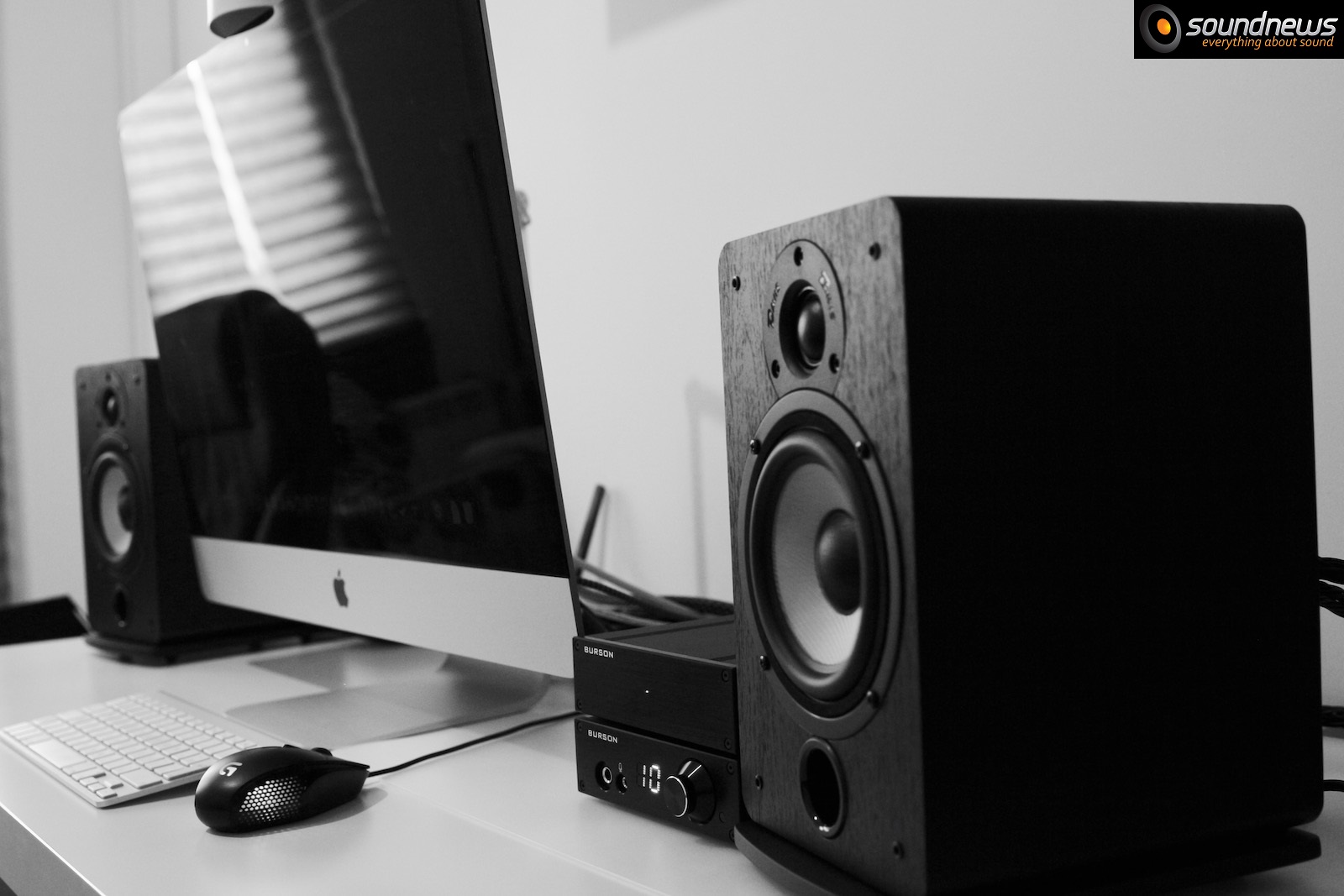
Soundstage performance is better than expected; especially looking at its size and at those power ratings.
It never sounds tiny or crowded, the stage is medium to large in size and it fills the room quite nicely. I tried my speakers in two rooms, one that has around 13 mp and one that has around 34 mp, in both rooms but especially in the bigger one the sound really opened up and a real sense of scale was heard.
The next day I decided to use the Bang with my reference DAC – Matrix X-Sabre Pro that also has a digital pre-amp section.
Well the stage opened up even more, sound became not just wider but much more deeper.
I started hearing voices not in front of my speakers but behind them, a weird but interesting effect.
Speed ranked up, impact was better and the FR overall became more linear.
More details could be picked up and sound became even more controlled, it should not come as a surprise as X-Sabre Pro is much more expensive than the Play Basic.
Comparison with my Cambridge Audio Azur 851A
Burson Bang goes for 500 USD/EUR and Azur 851A for 1500 USD/EUR so it is not a fair comparison at all but an interesting one.
Using the same source (X-Sabre Pro) I finally got a better sense of power and scale with Azur 851A. I had more volume with Azur 851A but not much more as I was expecting. Azur 851A kicked a bit more and sounded more linear.
However, Burson Bang sounded more…alive, it has a touch of warmth that could really help in some situations.
What really impressed me is that Bang sounded as clear as the Azur 851A. Not a single micro-detail was missed, not a single note was unheard and for that I think Bang punches way above its weight and price point.
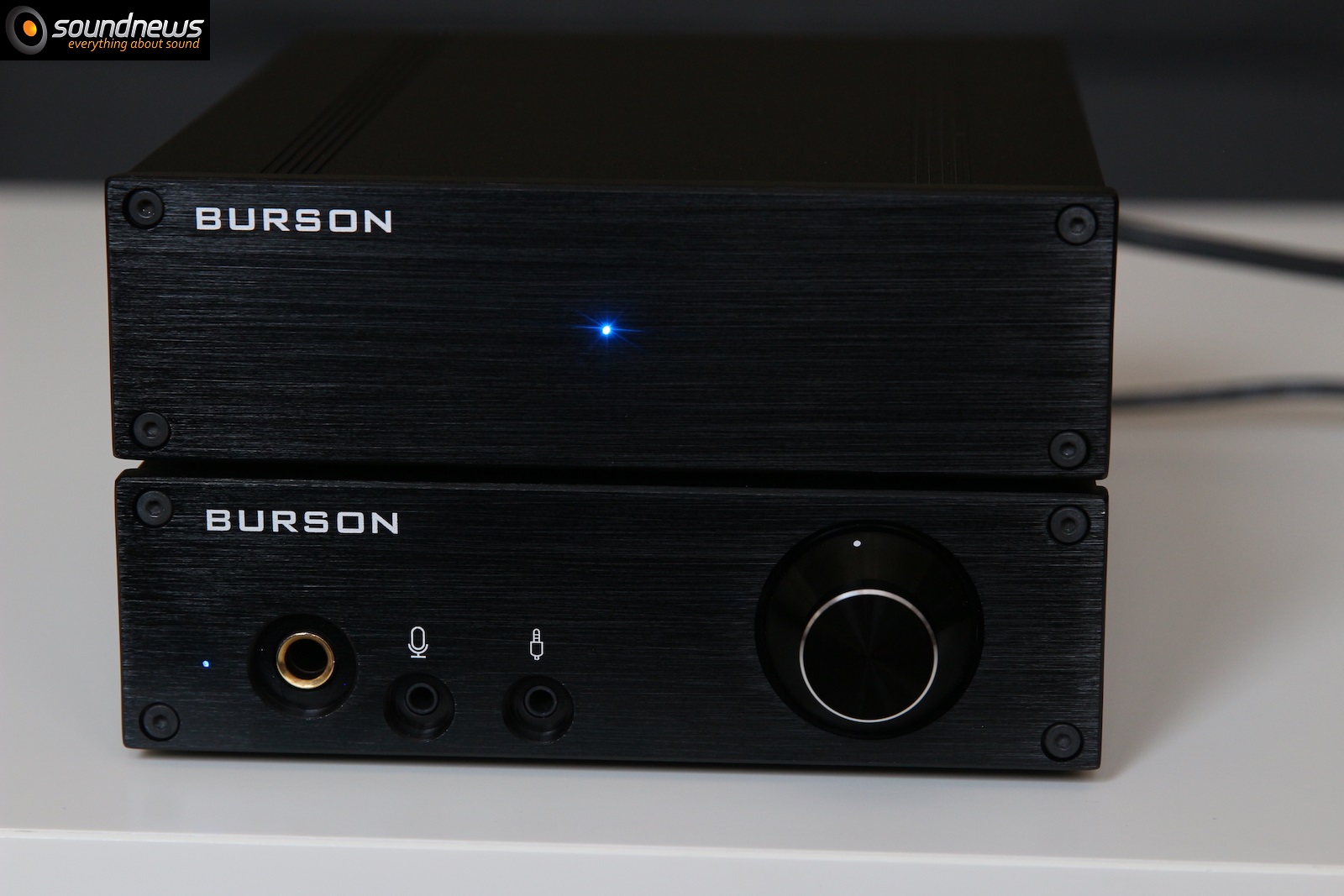
Conclusion
For a simple and elegant desktop solution I can recommend enough the Burson Bang, it is just perfect in a small environment, hell it even worked great in my living room as I didn’t hear any soundstage or scale restrains.
It always sounded big and bold; it is exactly how Burson gear always sounded.
Having bogs of power, a large soundstage and a natural tone, you really can’t go wrong with the Bang.
Burson again goes with a Bang! Until next time my friends!
PROS:
- Great sense of scale, wide spread soundstage
- Sounds much bigger and powerful compared to its size
- Pretty linear FR with just a slight midrange emphasis
- Natural tone with a great sound flow
- Quality and minimalist construction
- Works great with Burson Play an Fun
- Very good price/performance ratio
CONS:
- A slight grain on treble
ASSOCIATED EQUIPMENT:
- Speakers: Davis Acoustics Eva, KEF LS50W
- Power amp: Burson Bang
- Integrated amp: Cambridge Audio Azur 851A
- Pre-amps: Burson Fun, Matrix X-Sabre Pro
- DACs: Matrix X-Sabre Pro, Burson Play
- Cables: Burson Cable Pro+, Kimber PR8, QED Reference
